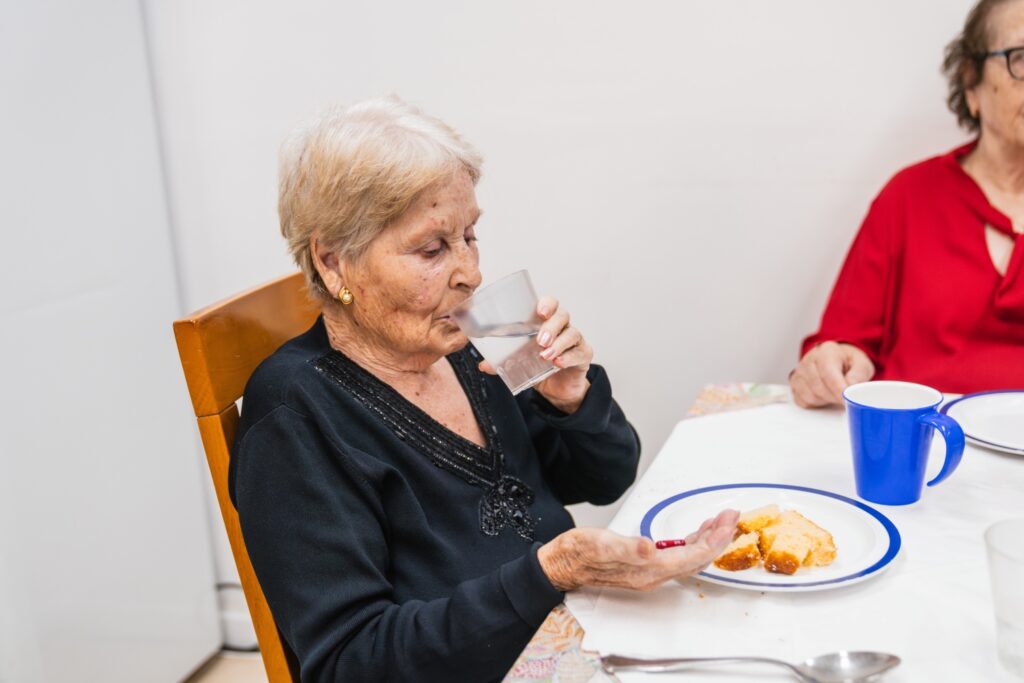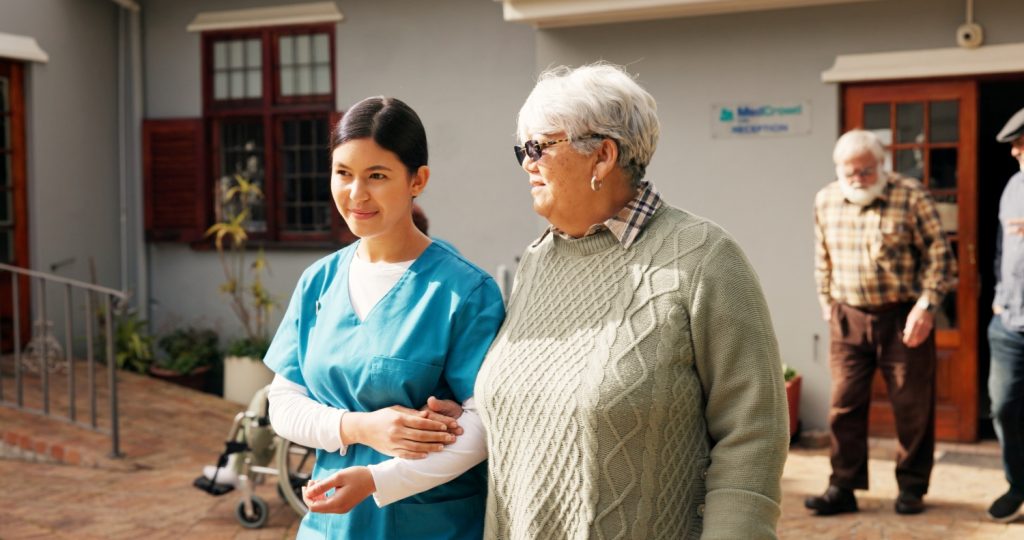This is the second of three blog posts in which University of North Carolina-Chapel Hill Professor James H. Johnson, Jr., PhD, lays out the current landscape facing CCRCs, from placement challenges for older adults to strained workforce issues to strategies for the future.
In my previous post, I highlighted the emergent problem CCRCs face due to the changing health status of older adults entering their communities as independent living residents. In this post, I focus on a related problem, drawing on findings from the same study commissioned by a statewide association representing CCRCs in a Southern U.S. state, to highlight major labor challenges exacerbated by increased demand for home healthcare and emergency services in CCRC independent living spaces.
Like many other industries, CCRCs were facing major workforce challenges prior to the COVID pandemic. CCRC hiring managers report those challenges worsened during the crisis and remain a major challenge today, which threatens the ability of CCRCs to continue to deliver high quality services.
The CCRC workforce problem is multidimensional, according to the CCRC key informants we interviewed. It includes high staff turnover/retention issues, non-competitive wages, internal pay inequities, increased competition for talent, and shifting job seeker attitudes and behaviors. The problems reportedly are especially acute in CCRC skilled nursing care and dining services.
Commenting on the situation in the skilled nursing care unit of one CCRC, a nursing supervisor stated:
“Oh, the turnover rates. It’s crazy. It’s bad. CNAs, everywhere, all departments. When I started, that really wasn’t the case. You had people that were working here for like 20 years. But a lot of people left [during COVID]. So, we’ve had a lot of turnover.”
A skilled nursing care unit supervisor in another CCRC added:
“You are challenged with staff attendance while trying to maintain a high level of care. The powers that be don’t recognize the staffing challenges. They just think that, oh, it’s going to get done, and when it doesn’t get done, it’s like what happened? Well, we didn’t have coverage. This person did not show up [for work]. I feel pressure to make sure that these things are getting done and I am making every effort. They will get done. It just might not get done in the time frame that you want it done.”
And a third nursing manager stated that non-competitive salaries are partially responsible for worker turnover in skilled nursing care:
“I think we have to face the challenge now to keep staff or to encourage more people to come on [board]. During COVID, a lot of big hospitals raised their pay to such an unattainable level for us. We could not keep up with that so a lot of time our culture has to make up for the fact that we cannot pay what the big companies do pay that are for-profits.”
Acknowledging a similar problem in CCRC dining services, a dietary manager said:
“It’s very hard, not just in nursing, but also if someone can go to Chick-fil-A and make $16 an hour, never had a job before, and they’re coming to our facility, and they’re going to make $13 an hour in food nutrition. It’s very hard to compete with that.”
A frontline worker in dining services agreed, asserting:
“[Our] hourly pay, it’s not competitive. I know [someone] who’s worked here for about 10 years in main dietary. She’s barely making any more than someone who is fresh into the job. It doesn’t matter how long you worked here or how long she’s worked here; she’s not getting the raises she deserves.”
‘The CCRC was advertising new employee salaries on the expansion side and people who were already here were not offered the same salary.’
Concurring with the frontline dietary worker, a dining services supervisor added:
“The pay is definitely a threat, because they can go down the street and make a dollar more. They can go down the block and make $2 more [per hour]. We make every effort to keep the staff that we hire. But if they have the mentality that ‘I don’t have to work here,’ or ‘I can go get another job,’ that’s where our issues come.”
Another frontline dietary worker chimed in stating:
“I [came] here [dietary unit] from Dunkin Donuts [where] I was a supervisor. I took a $2, $3 pay cut. Of course, I was a supervisor [there]. But it was fast food, and I took [the] pay cut to come and work here [because] of the [better working] conditions. But I think every department [here] is severely underpaid and I think that is the reason why we can’t keep staff. I’ve seen several people leave [my department] because they’re like, yes, it’s a great place to work, but it’s not worth the pay cut.”
CCRCs, in their efforts to recruit and retain a high quality and committed workforce, also confront pay equity issues within their organizations, especially in communities that have successfully executed expansion plans, as the following frontline worker noted:
“I just want to touch on pay. We had an expansion and the CCRC was advertising new employee salaries on the expansion side and people who were already here were not offered the same salary. It became a problem to where we were losing staff on this side of campus to go on the other side of campus just because they could make more money.”
Another frontline worker weighed in, stating emphatically:
“That [pay inequity] has gotten worse since COVID. Before COVID, everybody made the same all across the board according to their skill level and stuff like that. However, after COVID and after expansion, let me say that’s when it got a little funky when it came down to pay. Yes, we got [whatever raise was offered] but that didn’t touch the surface on the dollars they were getting in the [new] building across the street.”
Given the rapid growth of the senior care market, CCRC managers volunteered that fierce competition for talent is a major driver of the industry’s labor problems.
For example, one said:
“We’re in a very competitive staffing environment. There are 4 CCRCs within a few miles of here. And that doesn’t count [the facilities in a nearby city] where there are other alternative forms [of senior care] that may not be the same kind of CCRC.”
Another added:
“A major threat for us here is within a 5-mile radius, there are 7 continuing care communities, there’s 3 hospitals, and there’s like 7 or 8 skilled nursing facilities. So, the major threat for us is competition. And the competition is pay and benefits because most people are looking at the benefit package. What is your 401-K match? What’s your PTO [paid time off] policy? How many vacation days do I get? It’s a very competitive area, and people will search around. It’s over 20-some places they could choose to work from.”
CCRC managers and hiring supervisors were quick to assert that the ability to create and maintain a stable workforce is further complicated by shifting attitudes and behaviors of job seekers:
One CCRC supervisor said:
“We’re hiring people, and that’s a good thing. We’re hiring a lot more people than we were a year ago. But retaining those people, that’s a different story. What we’ve noticed is, there are a lot of people that want to come to work and make more [money]. But they want to do less work. And so, trying to find the right people to come in and actually want to work and do their job and not sit around all day has been a big issue.”
‘But the people coming in now, they’re just here to get their paycheck.’
A dining facility manager felt similarly, and said:
“Our staff side is hurting. Now we get people hired, but you have to get them trained, get them equipment, and stuff like that. However, the people that I’m getting in are people who don’t have that drive to care about their jobs. They talk good games during the interview, that is, they say things like ‘this is amazing, this is what I want to do.’ [But] a couple of weeks down the line, you have to [constantly] push them to do their jobs. That’s frustrating.”
And a third CCRC manager said:
“There’s high turnover. I see new faces almost every day or every other day. I don’t know if it is a continuation of the cultural shift during COVID, when people were just quitting or switching jobs. I think for a lot of us who’ve been here for several years, [our work] is a passion. But for new people that are coming in it seems like starting and quitting jobs “like it’s just another day” is the new norm.”
Attempting to diagnose the source of the problem, another CCRC manager asserted:
“It’s the work ethic that some people have after COVID. It’s almost like they feel like we owe them something. It’s different. When [I] started [here as a frontline worker], [I] wanted to take care of [the residents], like if my mom and dad were still living and lived here. But the people coming in now, they’re just here to get their paycheck. They want to sit around, do nothing, and then go home. There’s [a sense] of entitlement [that] takes away from the care.”
A CCRC manager and a hiring supervisor highlighted specific behaviors of job applicants that they found unethical, unprofessional, and downright frustrating.
One said:
“The struggle that I have is getting people to show up for the in-person interview. The phone interview will go great, and they’ll set everything up, and then they won’t show up for the in-person interview, or they’ll show for the in-person interview, and then they won’t show up for orientation. So, getting that follow through all the way can be challenging.”
Another agreed:
“Same issue. They will fill out an application or send a resume. And they’ll book an interview, not show. They’ll get hired and not show. That’s been super frustrating because you’re trying to get good people in here … to help out the people we already have by alleviating their workload a little bit, and what I am finding a lot is a kind of bait and switch where they’ll tell us they have this availability, so we make them an offer—we hire them. They get to orientation, or before even orientation, they give us a completely different schedule. And it’s kind of like, Okay, now what do we do? That’s happened twice in the last week. So that’s why it’s fresh on my mind.”
Key informants in the CCRC industry were quick to offer recommendations regarding how to address the workforce challenges, which are exacerbated by the mental and physical health infirmities of entering independent living residents that require attention. Those recommendations are the subject of the third post in this series.
Watch for my third blog post on how CCRCs might move forward, on April 8.
James H. Johnson, Jr., PhD, is a William Rand Kenan, Jr. Distinguished Professor in UNC-Chapel Hill’s Kenan-Flagler Business School.
Photo credit: Shutterstock/Peopleimages.com – Yuri A













